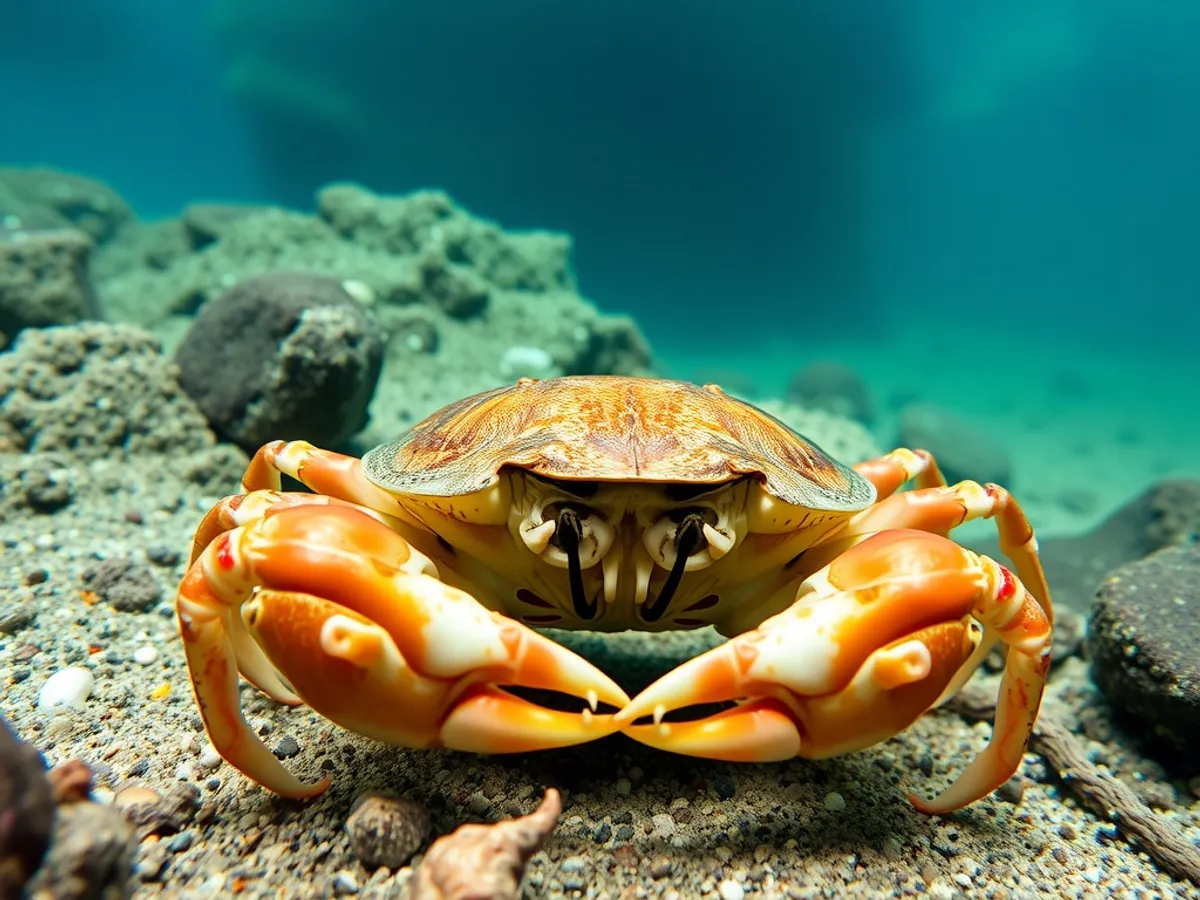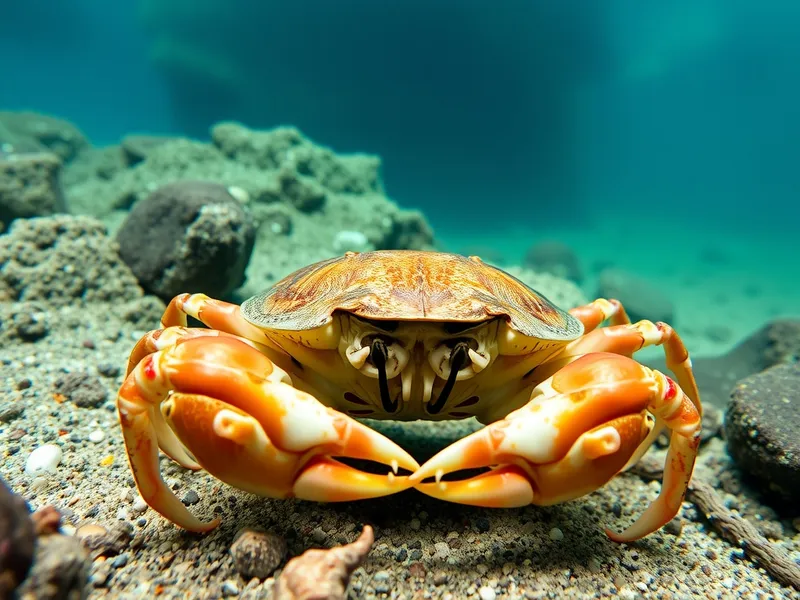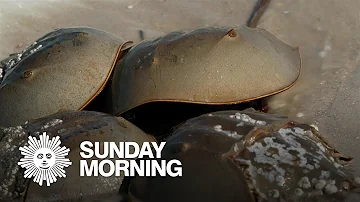
Horseshoe Crab
Limulus polyphemus

Meet the Horseshoe Crab
The horseshoe crab is a marine arthropod known for its hard, dome-shaped carapace and long, pointed tail spine called a telson. Despite its name, it is more closely related to spiders and scorpions than to true crabs. Horseshoe crabs have existed for over 450 million years, making them one of the oldest living species on Earth. These creatures are vital to coastal ecosystems and play a critical role in the biomedical industry due to the unique properties of their blue blood.
Classification
Invertebrate
Habitat
Coastal marine environments
Diet
Carnivore
Lifespan
20–40 years
Conservation
Vulnerable
Weight
1.5–4 kg
📖Fascinating Facts
Not a True Crab
Although called crabs, horseshoe crabs belong to a different subphylum and are more closely related to arachnids like spiders and scorpions.
Blue Blood Benefits
Their blue blood is used in the pharmaceutical industry to test for endotoxins, making it crucial for vaccine and medical device safety.
Eggs Support Ecosystems
Horseshoe crab eggs are an essential food source for migratory shorebirds, especially the Red Knot, during their long journeys.
📋Detailed Description
The horseshoe crab (Limulus polyphemus) is a large marine chelicerate arthropod, typically measuring 40–60 cm (16–24 in) in length including its rigid, spike-like telson. Its body is divided into three main sections: the prosoma (cephalothorax), which is covered by a smooth, horseshoe-shaped carapace; the opisthosoma (abdomen), which contains gills and muscle attachments; and the telson, which is used for righting itself if overturned. Horseshoe crabs possess ten legs, with the first pair modified as chelicerae for food handling. Their compound lateral eyes are sensitive to both visible and ultraviolet light, while additional simple eyes detect changes in light intensity, aiding in navigation and circadian rhythm regulation. The ventral surface houses book gills, which facilitate both respiration and limited terrestrial movement during spawning. Horseshoe crabs are primarily nocturnal, burrowing into sediment during the day and emerging at night to forage. They are opportunistic benthic feeders, consuming worms, mollusks, and detritus. Socially, they are mostly solitary except during mass spawning events. Reproduction involves complex mating aggregations on sandy beaches, with external fertilization. Horseshoe crabs are renowned for their copper-based blue blood, which contains amebocytes vital for detecting bacterial endotoxins, making them indispensable to biomedical science. Their evolutionary lineage dates back over 450 million years, with minimal morphological change, earning them the status of 'living fossils.'
💡 Did you know?
Horseshoe crabs are often called 'living fossils' because they have remained virtually unchanged for hundreds of millions of years.
🔬Research & Sources
Wikipedia Summary
Horseshoe crabs are arthropods of the family Limulidae and the only surviving xiphosurans. Despite their name, they are not true crabs or even crustaceans; they are chelicerates, more closely related to arachnids like spiders, ticks, and scorpions. The body of a horseshoe crab is divided into three main parts: the cephalothorax, abdomen, and telson. The largest of these, the cephalothorax, houses most of the animal's eyes, limbs, and internal organs. It is also where the animal gets its name, as its shape somewhat resembles that of a horseshoe. Horseshoe crabs have been described as "living fossils", having changed little since they first appeared in the Triassic.
Last Modified: 5/25/2025
🎭Behavior & Social Structure
Horseshoe crabs are largely nocturnal and exhibit crepuscular activity peaks, emerging from the substrate at dusk to forage. They use their chelicerae and walking legs to manipulate and crush prey, primarily polychaete worms, small bivalves, and other invertebrates. Feeding is facilitated by bristles and gnathobases on their legs, which grind food before ingestion. During non-breeding periods, horseshoe crabs are solitary, but during the breeding season, they aggregate in large numbers on intertidal beaches. They exhibit homing behavior, returning to natal beaches for spawning, guided by environmental cues such as lunar cycles and water temperature. Horseshoe crabs are capable of limited burrowing to avoid predation and desiccation. When threatened, they use their telson to flip themselves upright. Their daily routine involves alternating periods of rest, foraging, and, during the breeding season, reproductive activity.
👶Reproduction & Life Cycle
Horseshoe crabs exhibit a highly synchronized reproductive cycle, with spawning typically occurring during spring and summer high tides, especially around the full and new moons. Males arrive at spawning beaches first and use specialized claspers on their first pair of walking legs to attach to females. Females, often larger (up to 70 cm/27 in), lay clusters of 2,000–4,000 eggs in shallow sand nests; a single female may lay up to 90,000 eggs in a season. Fertilization is external, with multiple males sometimes fertilizing the same clutch. Incubation lasts 2–4 weeks, depending on temperature and salinity. Larvae, called trilobite larvae, resemble miniature adults and undergo several molts before reaching maturity, which can take 9–12 years. There is no parental care; eggs and larvae are vulnerable to predation by shorebirds and fish.
🛡️Adaptations & Survival
Horseshoe crabs possess several key adaptations for survival. Their hard, dome-shaped carapace provides protection from predators and environmental hazards. The book gills enable efficient oxygen uptake in both water and briefly on land, facilitating spawning. Compound and simple eyes allow for acute sensitivity to light and movement, crucial for navigation and mating. The telson is an effective righting tool and may deter predators. Their copper-based hemocyanin blood is highly efficient at oxygen transport in low-oxygen environments. Amebocytes in their blood detect bacterial endotoxins, forming the basis for the Limulus Amebocyte Lysate (LAL) test in medicine. Horseshoe crabs can tolerate a wide range of salinities and temperatures, contributing to their ecological resilience. Their slow growth and long lifespan are evolutionary strategies for surviving in fluctuating coastal environments.
📚Research Sources
🎨Cultural Significance
Horseshoe crabs have played roles in human culture for centuries. Indigenous peoples used their shells for tools and fertilizer. In modern times, their blue blood is essential for the LAL test, which ensures the safety of vaccines and medical devices by detecting bacterial contamination. Horseshoe crab eggs are a vital food source for migratory shorebirds, especially the threatened red knot (Calidris canutus rufa), linking their ecological importance to bird conservation. Symbolically, horseshoe crabs are often cited as examples of evolutionary stasis and resilience, and they feature in educational and natural history contexts. In some Asian cultures, related species are used in traditional dishes, though this is less common for L. polyphemus.
🔬Recent Research & Discoveries
Recent research has focused on horseshoe crab population genetics, migratory behavior, and the impacts of biomedical bleeding on survival and reproduction. Studies have shown that sublethal bleeding can reduce spawning activity and increase mortality. Advances in synthetic alternatives to LAL, such as recombinant Factor C assays, may reduce reliance on wild populations. Genomic studies are providing insight into the evolutionary history and immune system of horseshoe crabs, revealing ancient gene families and unique adaptations. Long-term ecological monitoring is ongoing to assess population trends and inform conservation management, particularly in light of climate change and habitat alteration.
🎥Wildlife Videos

Horseshoe crabs: Ancient creatures who are a medical marvel
Correspondent Conor Knighton visits New Jersey beaches along the Delaware Bay to learn about horseshoe crabs – mysterious ...
CBS Sunday Morning

Horseshoe Crabs - Animal Wildlife Full DOCUMENTARY - 2017
Horseshoe Crabs - Animal Wildlife Full DOCUMENTARY - 2017.
Documentary Trends

Horseshoe Crabs: Ancient Mariners of the Sea | Wildlife Documentary | Fusion Documentary
Discover the fascinating world of horseshoe crabs in this wildlife documentary. Learn about these ancient mariners of the sea and ...
Fusion Documentary

Horseshoe Crabs: North America's Biggest Mating Event
----------- SOCIAL MEDIA https://www.tiktok.com/@animalogic https://www.instagram.com/animalogicshow/ ...
Animalogic

The Horseshoe Crab
This is a video of the horseshoe crab taken from the BBC's Life in the Undergrowth documentary series.
globalzoo

Horseshoe Crab Facts: NOT true CRABS | Animal Fact Files
The horseshoe crab is known as a crab, but a horseshoe crab is not a real crab! These animals are also extremely beneficial and ...
Animal Fact Files
🌍Habitat Information
The Horseshoe Crab typically inhabits Coastal marine environments environments. Horseshoe Crabs have adapted to their environments with specialized features and behaviors.
Primary Habitat:
Coastal marine environments
More detailed habitat information will be available soon.
🛡️Conservation Status
The Horseshoe Crab is currently classified as Vulnerable. Conservation efforts are crucial for preserving this species for future generations.
Common Threats:
- 🏠Habitat loss and fragmentation
- 🌡️Climate change impacts
- 🎯Hunting and poaching
- 🏭Human-wildlife conflict
⚠️Threats & Conservation Challenges
Major threats to horseshoe crabs include overharvesting for bait (notably in eel and whelk fisheries), biomedical bleeding for LAL production, habitat loss due to coastal development, and climate change impacting spawning beaches. Egg predation by birds and fish, especially during mass spawning events, can limit recruitment. Population declines have been observed in some regions, particularly along the U.S. Atlantic coast. Conservation challenges include balancing biomedical needs with population sustainability, restoring degraded habitats, and regulating harvests. The IUCN currently lists Limulus polyphemus as Vulnerable, with some regional populations at greater risk. Ongoing monitoring and adaptive management are critical to ensuring species survival.
🔬Scientific Classification
Scientific Name
Limulus polyphemus
Classification Hierarchy
🔍 About Taxonomic Classification
Taxonomic classification is a hierarchical system used by scientists to classify and organize living organisms based on shared characteristics and evolutionary relationships.
The system moves from broad categories (Kingdom) to increasingly specific ones, with each animal's scientific name typically consisting of its Genus and species.
📝Community Notes
Share your observations and insights about the Horseshoe Crab with our community of wildlife enthusiasts.
Join Our Community
Sign in to share your observations and connect with fellow wildlife enthusiasts.
Sign In to ContributeNo community notes yet
Be the first to share your observations about the Horseshoe Crab!
Explore Horseshoe Crab
Select a tab above to learn more about this amazing animal.
📸Photo Gallery
No photos available for this animal yet.
🌟Discover More Wildlife
Continue your journey of discovery with more fascinating animals from our database
